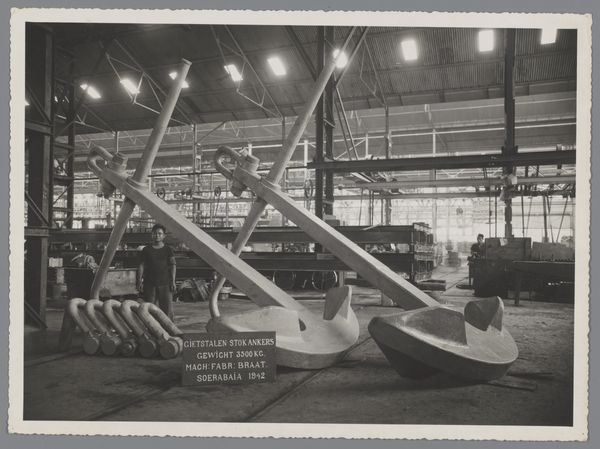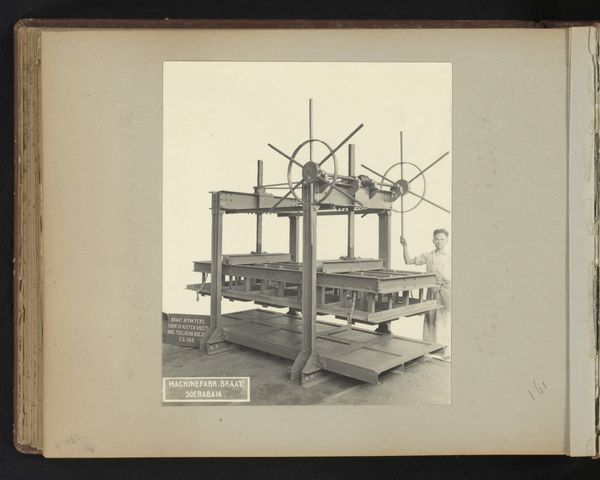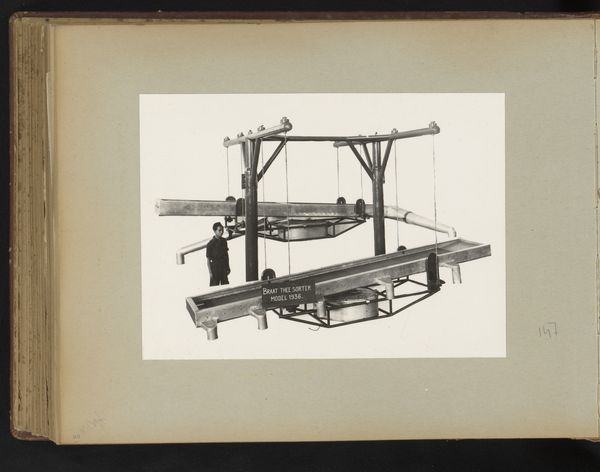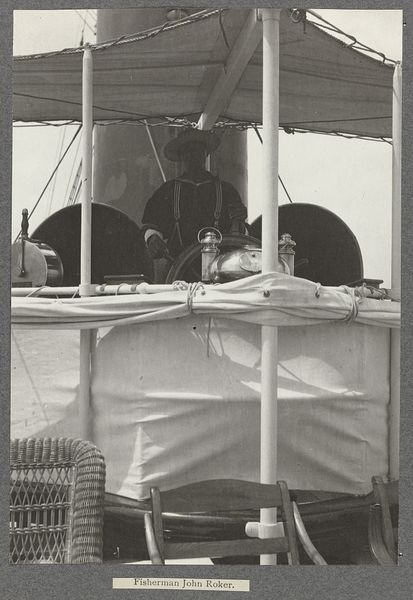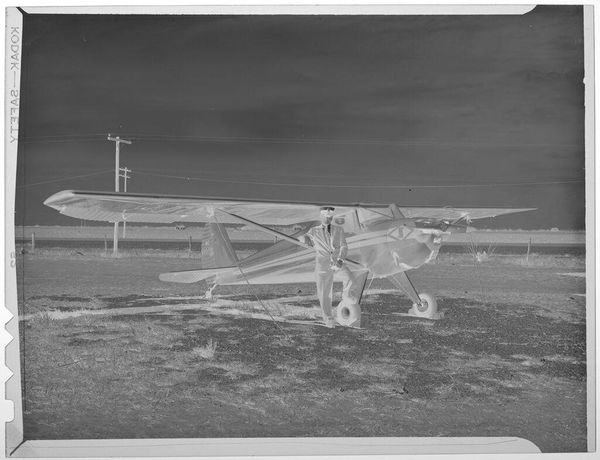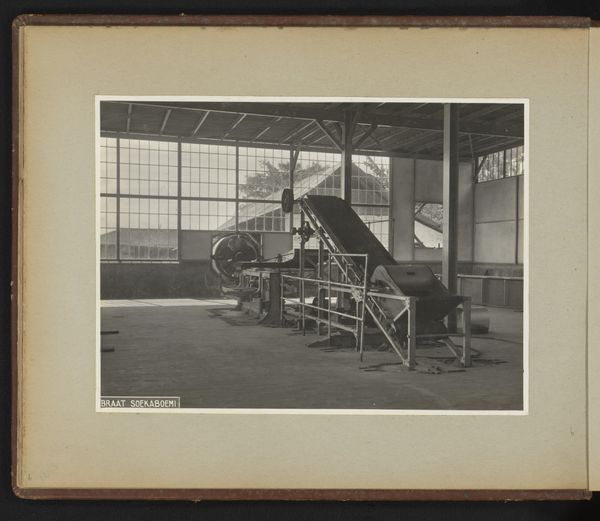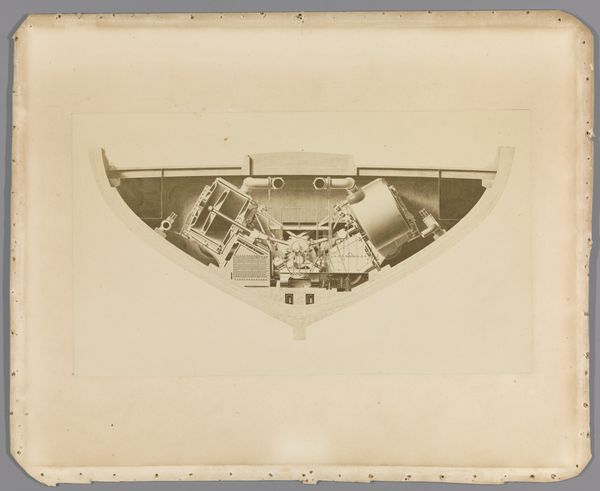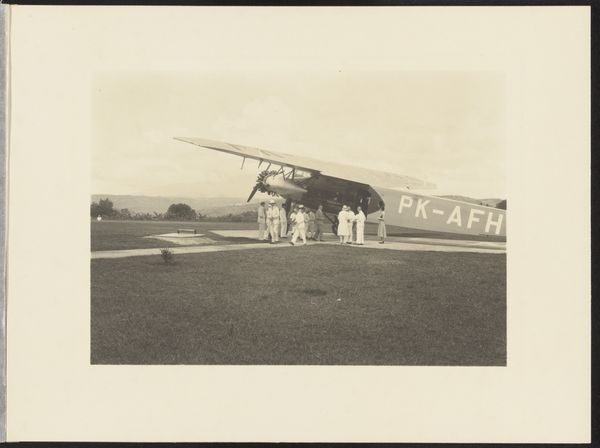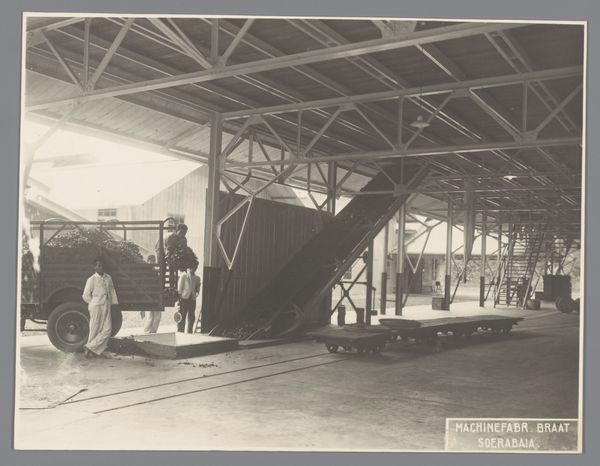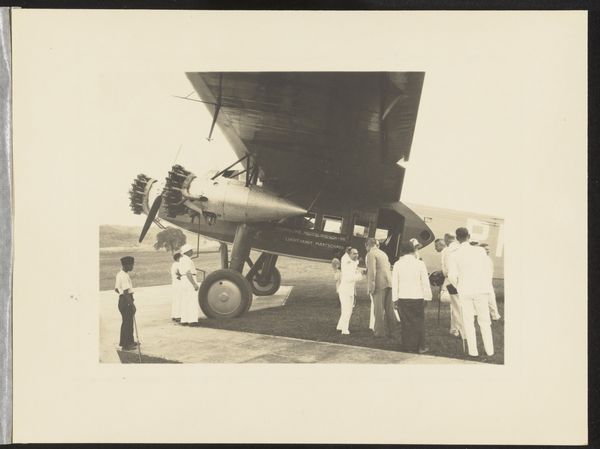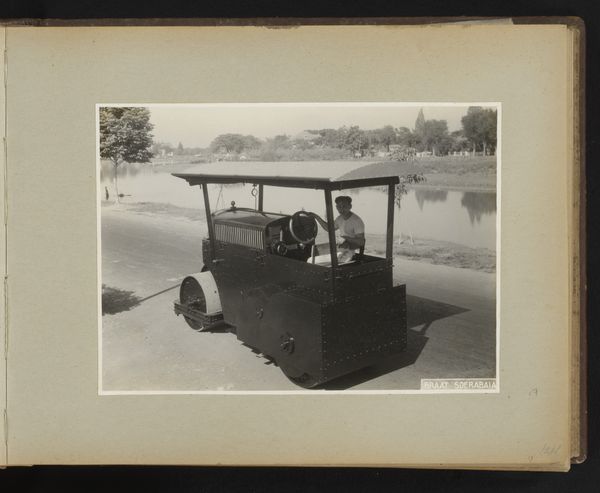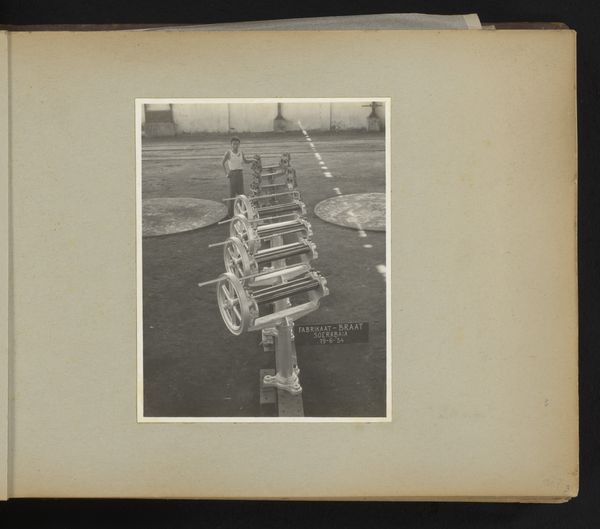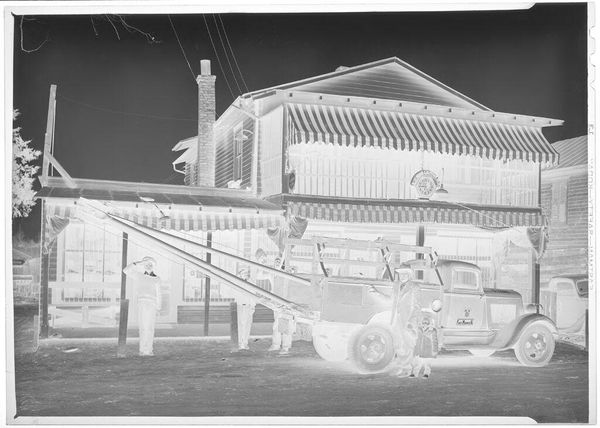
photography
#
still-life-photography
#
muted colour palette
#
photography
#
desaturated colour
#
geometric
#
framed image
#
muted colour contrast
#
statue
Dimensions: height 177 mm, width 235 mm
Copyright: Rijks Museum: Open Domain
Curator: This is a photograph entitled "Theesorteermachine," dating back to 1934, now residing at the Rijksmuseum. The details are rather fascinating for still-life photography, isn't it? Editor: Immediately, I'm struck by the photograph's somber mood. It feels incredibly stark, almost clinical. The desaturated tones add to this sense of distance and perhaps speaks volumes about labour and production, particularly from a colonial perspective. Curator: The subject itself – a tea-sorting machine designed and built by Braat Soerabaia – is quite indicative of colonial mechanics in what was then the Dutch East Indies. The object stands out in front of a framed text plate with an employee of Braat besides the machine. I'm immediately reminded of the symbolic implications of tea in shaping global economics and geopolitics. The geometric framework juxtaposed against the man adds an essential weight. Editor: Absolutely, this photo has powerful associations to the legacy of exploitation. I’m interested in the photographic framing. It positions the machine—the symbol of industrial progress—alongside a human figure, a Javanese man, a representation of labour and the power dynamics inherent in colonial industries, essentially extracting resources under Dutch rule. It's almost as though the machine and the worker are equally commodities under scrutiny. Curator: That interplay is key. In terms of symbolism, notice how the light catches certain angles, especially within the mechanical parts? It's subtle, but gives off a religious symbolic dimension: the promise of progress alongside human endeavor, and the subdued palette reinforces a sort of austere monumentality. The colonial administrator believed that technology promised salvation through labour, a way of controlling its environment. Editor: Indeed. But thinking about it critically, there is little redemptive about such technological advancement when it's interwoven with systemic subjugation and oppression. This image serves to visually codify how racialized bodies became deeply entangled in the industrial capitalist machinery during colonial times. This is evident even down to how the subject sits to operate this equipment. It all signifies cultural and class distinctions between management and labour. Curator: I appreciate that sociohistorical assessment. It reveals how images of technology are never neutral; that’s an invaluable insight for understanding cultural continuities. Editor: And perhaps discontinuities, revealing not progress but profound inequities encoded into visual representations of history. Thank you.
Comments
No comments
Be the first to comment and join the conversation on the ultimate creative platform.

